Racing Against the Odds: The Inspiring Journey of Seabiscuit
In the history of American horse racing, few stories resonate as profoundly as that of Seabiscuit, the quintessential underdog whose journey from obscurity to triumph captivated the heart of a nation. At first glance, Seabiscuit was an unlikely hero. Born into a lineage that promised more than he initially showed, his early career was marked by a lackluster performance that belied the champion within. Standing at a modest height, with a stocky build and an ungainly gait, he seemed destined for mediocrity. Yet, beneath this unremarkable exterior beat the heart of a warrior, eager to defy the odds.
Seabiscuit’s story is a testament to the power of resilience and the enduring belief in potential. His modest beginnings are not just a prelude but a stark contrast to the glory that awaited him. From being overlooked and underestimated, Seabiscuit emerged as a symbol of hope during the trying times of the Great Depression, reminding a beleaguered nation of the value of perseverance and the sheer will to succeed.
The universal appeal of underdog stories is nowhere more evident than in Seabiscuit’s ascent to stardom. His tale is not just about horse racing; it’s a narrative that echoes the timeless human quest for redemption and the triumph of the underdog. Seabiscuit’s transformation from a forgotten horse to a national icon is a powerful reminder that greatness can come from the most unexpected places. It speaks to the spirit of American horse racing, where every competitor, no matter their origin, has a shot at victory. It’s a story that continues to inspire, proving that with determination and the right support, any underdog can become a champion.
Early life
Seabiscuit’s entry into the world of horse racing was under the shadow of his lineage, marked by the expectation carried by his pedigree. Born in 1933, he was a descendant of the illustrious Man o’ War, one of the most revered thoroughbreds in American racing history. Yet, despite this prestigious ancestry, Seabiscuit showed little of the promise that his lineage suggested. In the vast fields of hopefuls, he was just another young colt, one whose future seemed unremarkable at best.
The early phase of Seabiscuit’s career was fraught with challenges. His initial races were far from promising, casting a long shadow over his potential. Race after race, his performances were mediocre, failing to capture the attention or admiration of the racing community. This string of unimpressive outings branded him as an underachiever, a horse lacking the spark necessary to rise to the top. Observers and critics alike saw little in Seabiscuit that hinted at the legacy of his forebears.
These early struggles were not just a matter of unmet expectations; they were indicative of a deeper underestimation of Seabiscuit’s capabilities. He was often overlooked, deemed not worth the effort of training to reach higher standards. This perception was compounded by his appearance and demeanor, which did not fit the typical mold of a champion racehorse. Seabiscuit was compact, with bad front legs that were over at the knee which seemed ill-suited for the soundness and speed that racing demanded.
Yet, it was in these challenging beginnings that the seeds of Seabiscuit’s eventual triumph were sown. Faced with skepticism and low expectations, his story could have ended as a mere footnote in the annals of horse racing. But as we’ll see, Seabiscuit’s journey was only just beginning. Beneath the surface of these early setbacks lay a resilient spirit and an untapped potential that, once recognized and nurtured, would defy the odds and redefine what it means to be a champion.
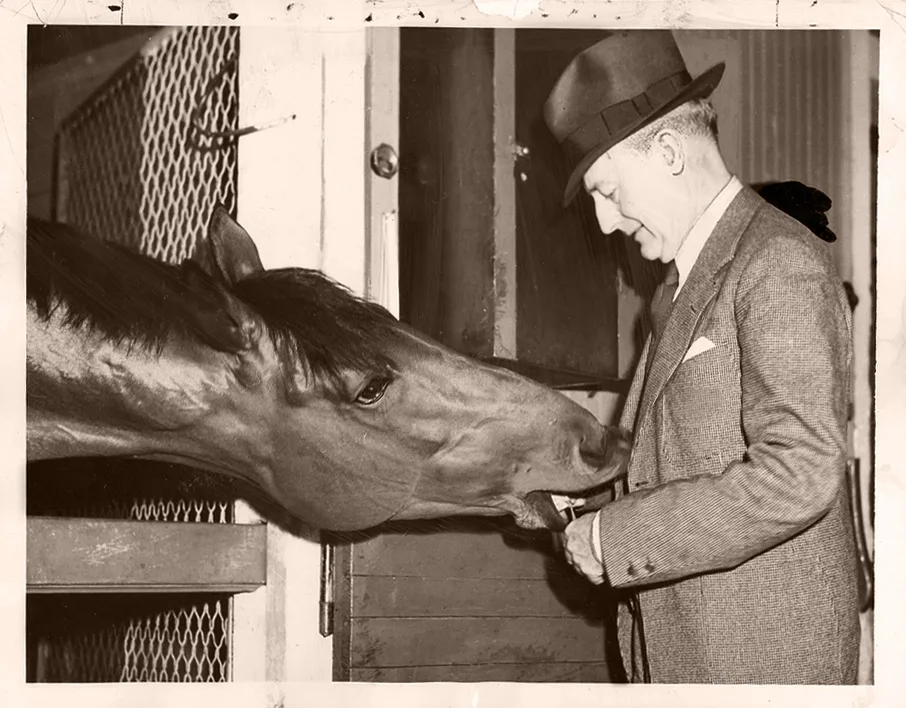
Photo credit: By Seabiscuit Heritage Foundation – Seabiscuit Heritage Foundation, Public Domain
Turning Point
The turning point in Seabiscuit’s life came with the introduction of two men who would redefine his destiny: Tom Smith, a trainer with a vision far beyond the conventional, and Red Pollard, a jockey whose spirit matched the fiery heart of Seabiscuit himself. Together, they formed a trio whose synergy and understanding of each other would challenge the preconceptions of the racing world.
Tom Smith, a man with an almost mystical connection to horses, saw something in Seabiscuit that no one else did. In an era where the physical attributes of a horse dictated its potential, Smith looked deeper, into the heart and soul of the animal. His training methods were unconventional, to say the least, focusing not just on physical conditioning but on building a psychological rapport with the horse. Smith believed in listening to the horse, understanding its needs, fears, and desires. His approach was holistic, treating Seabiscuit not as a racing machine, but as a partner, with respect and care.
Red Pollard, on the other hand, was a soul as battered and underestimated as Seabiscuit himself. Together, they found a kindred spirit in one another. Pollard’s connection with Seabiscuit went beyond the reins; it was a bond of trust and mutual respect. This deep, almost telepathic understanding between horse and rider was pivotal. Pollard was not just riding Seabiscuit; they were a single entity, moving with a shared heart and purpose. The bond they shared was a testament to the power of empathy and connection, transcending the mere mechanics of horse racing.
Under Smith’s guidance and Pollard’s ride, Seabiscuit began to show the world his true capabilities. Smith’s methods, which included tailored workouts, a varied routine, and an emphasis on mental well-being, prepared Seabiscuit not just physically but mentally for the challenges ahead. These innovative approaches, combined with the horse’s growing confidence and Pollard’s intuitive riding, set the stage for a series of victories that would defy expectations.
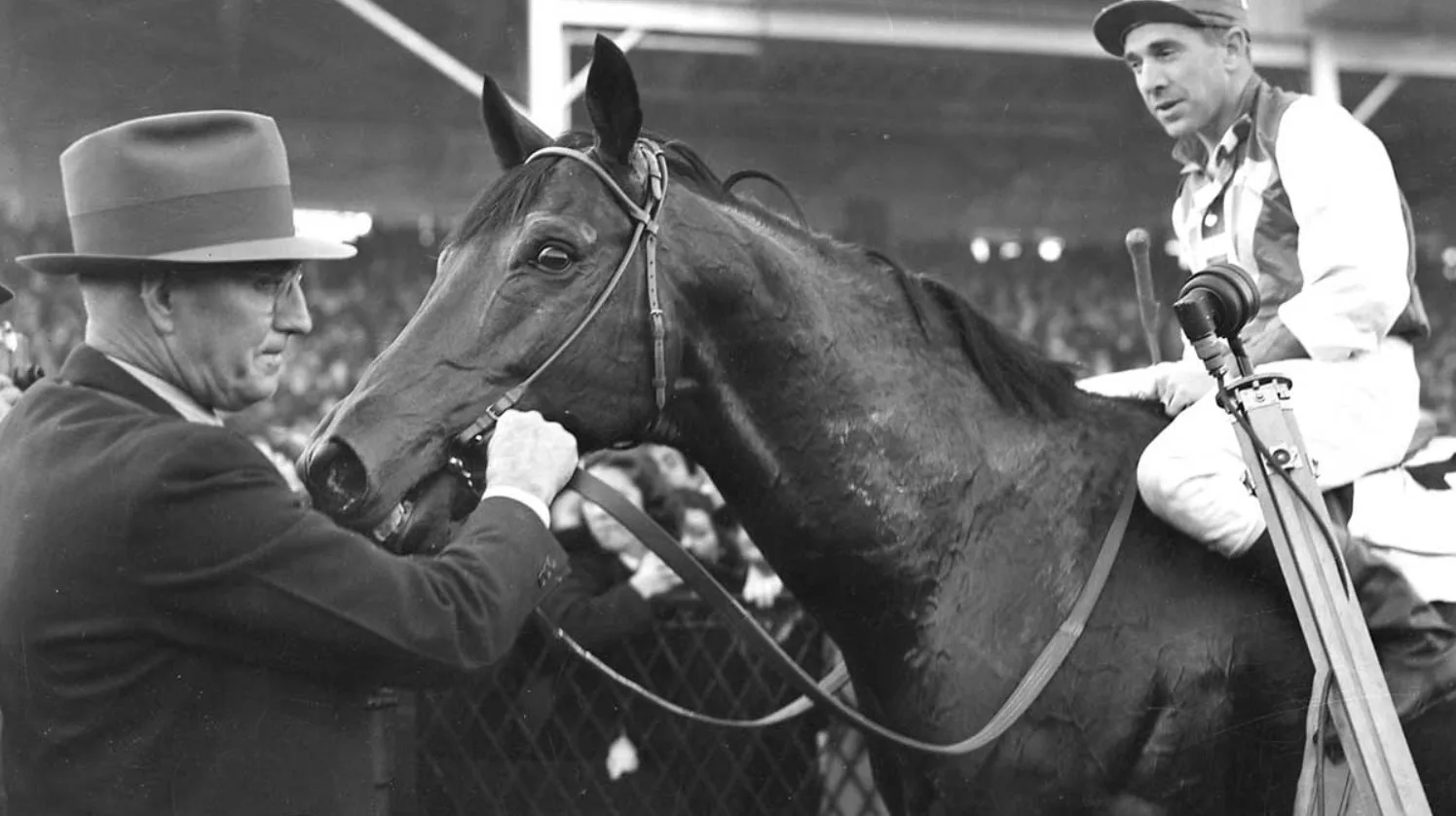
Rise to Fame
With Tom Smith’s innovative training and Red Pollard’s empathetic guidance, Seabiscuit began to unveil his true prowess on the racetrack, challenging the preconceived notions of what a champion looked like. His rise to fame was not just a series of races; it was a spectacle that captured the imagination of the American public during the depths of the Great Depression.
One of Seabiscuit’s early indicators of greatness was his unexpected victory at the Detroit Free Handicap. Here, against all odds and the skepticism of onlookers, Seabiscuit showcased his tenacity and will to win, defeating horses that were once considered far superior. This race was more than a win; it was a declaration of Seabiscuit’s arrival on the racing scene, stirring interest and excitement among fans and skeptics alike.
The Santa Anita Handicap, often referred to as the “Hundred-Grander,” provided a stage for one of Seabiscuit’s most dramatic performances. Competing against the finest horses in the country, Seabiscuit, under Pollard’s skillful ride, surged from behind in a breathtaking display of speed and determination. The crowd, which had swelled to record numbers, erupted in jubilation as Seabiscuit crossed the finish line, securing not just a substantial purse but the hearts of millions.
Perhaps the most defining moment of Seabiscuit’s career was the legendary match race against War Admiral, the Triple Crown winner and embodiment of equine perfection. This race was more than a competition; it was a cultural event, pitting the underdog against the aristocrat, the West against the East, the people’s champion against the establishment’s. The anticipation was electric, palpable, as the entire nation paused to witness this historic showdown. Seabiscuit’s victory, achieved in commanding fashion, transcended the sport, symbolizing hope and resilience in the face of adversity.
Seabiscuit’s races became gatherings of hope, where throngs of people, from every walk of life, came together to cheer for the horse that embodied their struggles and dreams. Each victory was a testament to perseverance, a beacon of light in the gloom of the Depression, reminding a beleaguered nation that triumph was possible, no matter the odds.

Challenges and Comeback
Despite the meteoric rise to fame and the series of stunning victories, Seabiscuit’s path was not without its hurdles. The most heart-wrenching of these challenges came in the form of injuries. Just as Seabiscuit was solidifying his place as a national icon, a serious leg injury threatened to end his racing career prematurely. This setback was not just a physical hurdle for Seabiscuit but an emotional one for Tom Smith, Red Pollard, and the legion of fans who had come to see the horse as a symbol of hope.
The injury sidelined Seabiscuit at a time when his rivalry with War Admiral had reached a fever pitch, delaying a much-anticipated match race that had captured the country’s imagination. For many, this seemed like the end of the road, a cruel twist of fate that would rob the racing world of its greatest story. But Smith, Pollard, and owner Charles Howard refused to give up on Seabiscuit. Their faith in his ability to recover, coupled with their unwavering support, set the stage for one of the most remarkable comebacks in sports history.
The road to recovery was long and fraught with uncertainty. Smith employed innovative rehabilitation techniques, while Pollard, himself recovering from a near-fatal racing accident, shared an even deeper bond with Seabiscuit, both of them fighting their way back from the brink. This period of rehabilitation was a testament to the resilience and determination of the team, a reflection of the fighting spirit that defined Seabiscuit.
The climax of Seabiscuit’s comeback story was the long-awaited match race against War Admiral at Pimlico, dubbed the “Match of the Century.” Against the backdrop of immense public anticipation, Seabiscuit, with jockey George Woolf substituting for the injured Pollard, faced off against the Triple Crown winner in a head-to-head battle that was more than just a race; it was a symbol of the underdog’s fight against the seemingly insurmountable.
In a display of sheer determination and speed, Seabiscuit outpaced War Admiral, not just winning the race but also cementing his legacy as one of the greatest racehorses in history. This victory was more than a testament to Seabiscuit’s speed; it was a victory for resilience, for the belief in second chances, and for the power of determination.

Legacy
Seabiscuit was more than a champion racehorse; he was a symbol of resilience and hope during one of America’s darkest times. The Great Depression cast a long shadow over the nation, but Seabiscuit’s victories offered a respite, a source of joy and pride in a landscape marred by despair. His underdog story resonated deeply with the American public, mirroring their own struggles and aspirations. Seabiscuit became a folk hero, embodying the belief that perseverance could overcome any obstacle, no matter how insurmountable it might seem.
The impact of Seabiscuit on horse racing and American culture is immeasurable. He revitalized a sport that was struggling to find its footing amidst economic turmoil, drawing crowds that had never before been seen at racetracks. His rivalry with War Admiral and his triumphant victories became the stuff of legend, etching his name into the annals of history not just as a racehorse, but as a cultural icon.
Seabiscuit’s legacy of hope and perseverance continues to inspire long after his time. His story has been immortalized in books, films, and documentaries, each retelling serving as a reminder of what can be achieved with determination and spirit. Laura Hillenbrand’s bestselling book, “Seabiscuit: An American Legend,” and the subsequent film adaptation brought Seabiscuit’s story to a new generation, highlighting the enduring appeal of the underdog narrative. These works not only celebrate his achievements on the racetrack but also delve into the profound impact he had on those around him and the nation as a whole.
The lasting interest in Seabiscuit’s narrative speaks to a universal theme that resonates across time: the triumph of the underdog. His story is a testament to the power of belief, not just in the potential of a racehorse, but in the capacity of the human spirit to overcome adversity. Seabiscuit’s legacy is a source of inspiration, a reminder that no challenge is too great when faced with courage, resilience, and the unwavering support of those who believe in us.

Conclusion
Seabiscuit’s legacy is a beacon of hope, illuminating the path through our own challenges, reminding us that resilience can carry us through the toughest times. His story, and those of Tom Smith, Red Pollard, and the entire team behind him, teaches us about the strength found in partnership, trust, and mutual respect. This special connection between humans and horses goes beyond the racetrack; it’s a profound bond that can bring out the best in both, leading to unimaginable achievements.
Seabiscuit’s journey from an overlooked underdog to a national hero shows us that greatness can emerge from the most unexpected places. It encourages us to look beyond the surface, to see potential where others might see limitation, and to believe in the possibility of transformation. Seabiscuit, Smith, and Pollard didn’t achieve their remarkable success overnight. It was their persistence, their refusal to give up in the face of setbacks, that led them to triumph.
Let Seabiscuit’s story inspire you in your own life. Whether you’re facing personal challenges, professional hurdles, or the daunting task of believing in the potential of someone or something when no one else does, remember the lessons of resilience, hope, and perseverance. The importance of never giving up on oneself or the ones we believe in cannot be overstated. In every challenge, there’s an opportunity for growth and triumph, much like Seabiscuit’s transformation from a disregarded horse into a symbol of American spirit and determination. To read about another famous horse – Marengo, Napolean Bonaparte’s legendary war horse

Resources
- “Seabiscuit: An American Legend” by Laura Hillenbrand: This bestselling book is a thorough and captivating biography of Seabiscuit, detailing his life, the lives of those around him, and his incredible journey from obscurity to fame. Hillenbrand’s narrative brings to life the drama and excitement of Seabiscuit’s races and the historical context of the 1930s.
- “The Blood-Horse Authoritative Guide to Betting Thoroughbreds”: For readers interested in the intricacies of horse racing, betting, and what made Seabiscuit such a standout on the track, this guide offers insights into the sport and its champions.
- “American Experience: Seabiscuit” by PBS: This documentary provides a visual complement to Hillenbrand’s book, featuring archival footage, interviews, and a deep dive into the cultural impact of Seabiscuit’s story during the Great Depression.
- “Comeback Season: Sports After 9/11” by the National September 11 Memorial & Museum: While not specifically about Seabiscuit, this resource explores the role of sports, including horse racing, in healing and uniting the country during times of national crisis, much like Seabiscuit did in the 1930s.
- “The Great Depression: America 1929-1941” by Robert S. McElvaine: To better understand the historical context of Seabiscuit’s story, McElvaine’s book provides a comprehensive look at the Great Depression, offering insights into the challenges faced by the American people during Seabiscuit’s time.
- Online forums and communities for horse racing enthusiasts: Websites like The Chronicle of the Horse or Horse Racing Nation offer a platform for readers to discuss Seabiscuit’s legacy, share personal stories of resilience, and connect with others who are passionate about horse racing and its history.
- A fascinating story of genetic testing using Seabiscuit DNA


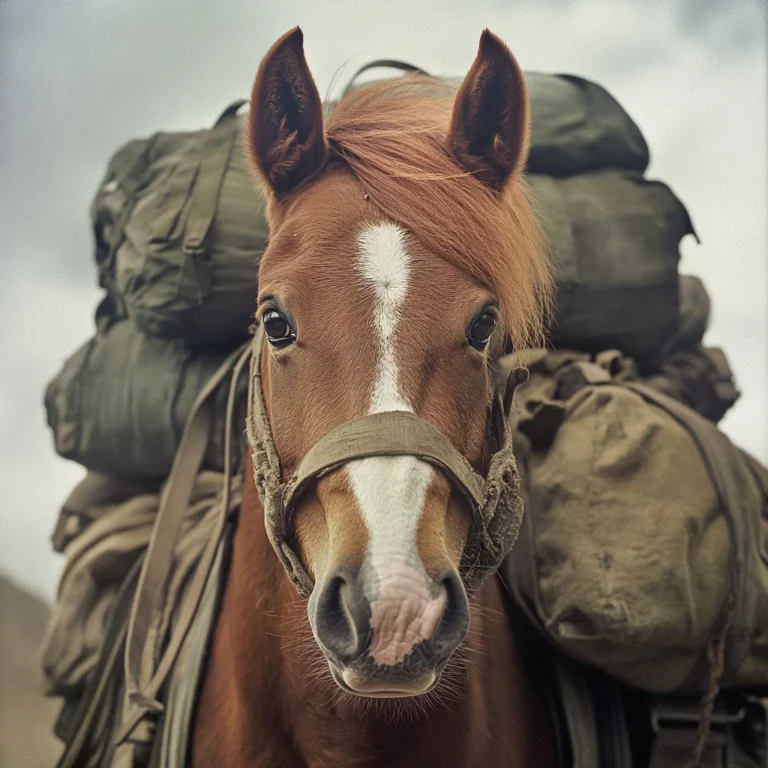
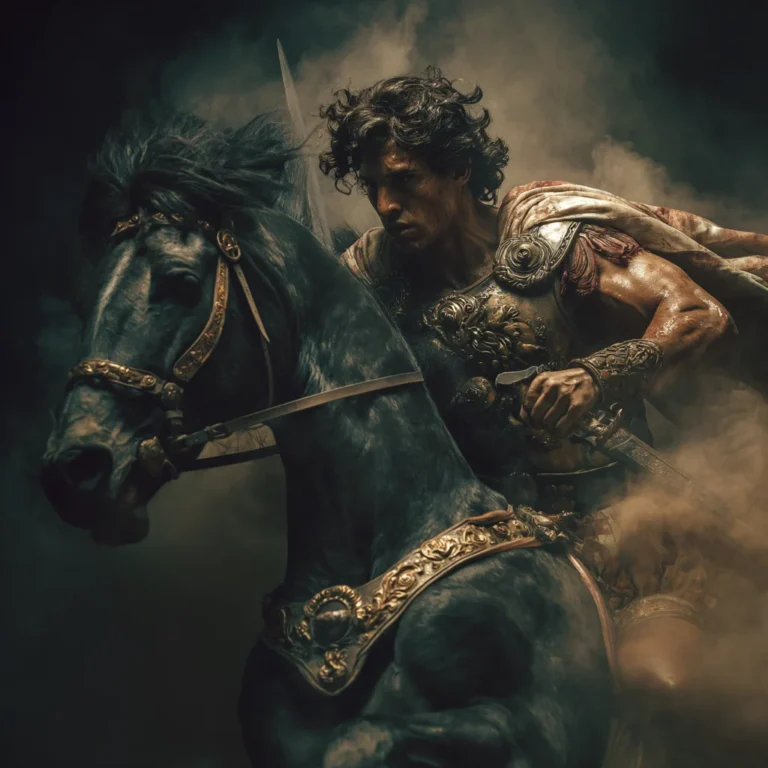


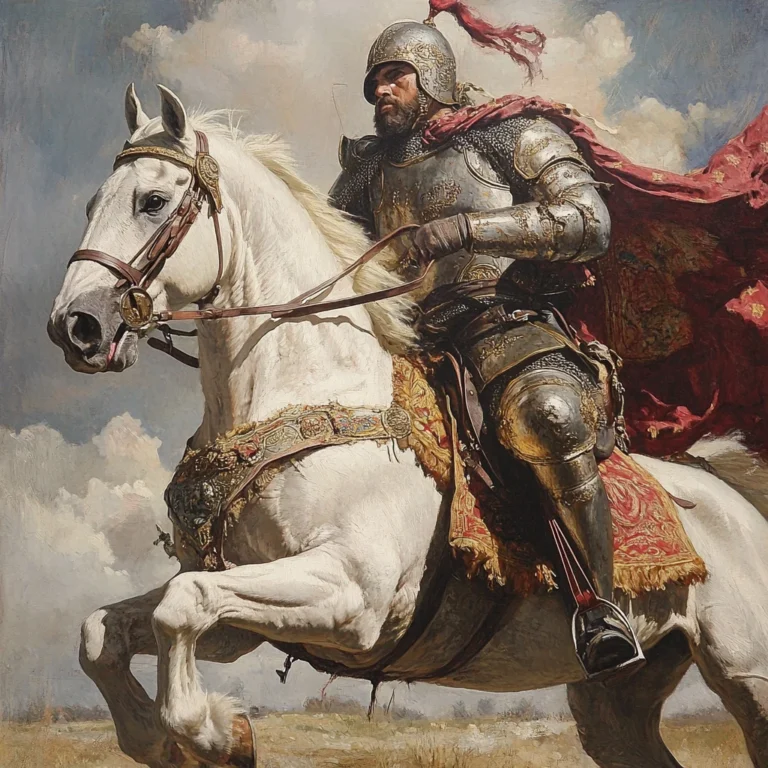
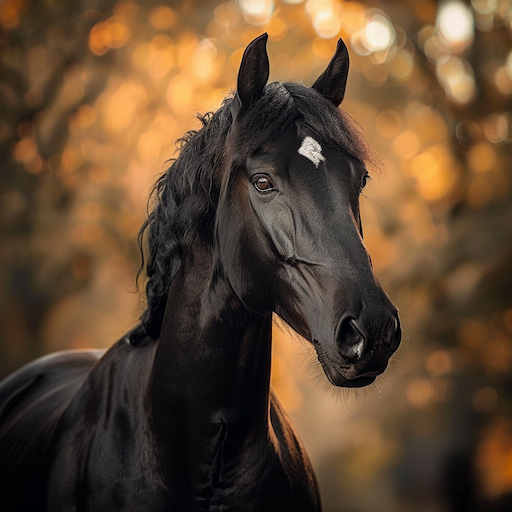
Leave a Reply